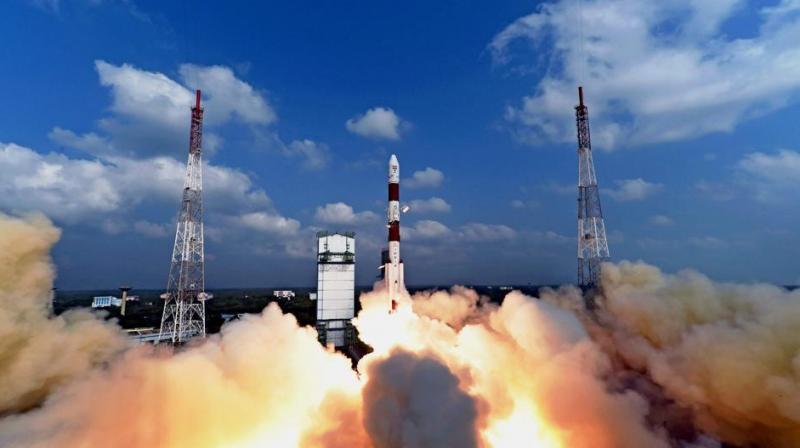Wrap-up: Isro sets the bar high up in sky

Isro on Wednesday launched a rockeful of 104 satellites into space over the course of 18 minutes, nearly tripling the previous record for single-day satellite launches. While president, Pranab Mukherjee, called it “a landmark in the history of our space programme,” Prime Minister Narendra Modi praised Isro stating. “What our Isro scientists have achieved will ensure that their names will be written in golden letters forever.”
The launch was high-risk because the satellites, released in rapid-fire fashion every few seconds from a single rocket as it travelled at 27,360 km per hour, could collide with one another if ejected into the wrong path.
The latest PSLV launch cost just $15 million but is indeed a most distinguished feather in Isro’s cap. The fact that the United States is India’s biggest “space customer’ is a further reflection of Isro’s achievements. How remarkable the launch of 104 satellites in one flight is can be understood from the earlier record — of 37 satellites launched in one go by Russia three years ago.
After the record launch, Isro is now looking at an orbiter to Venus, besides a second mission to Mars after creating history with its MOM mission. Apart from becoming a key nation in a growing commercial market for space-based surveillance and communication, India has also firmly established itself as a big player in space, the final frontier.
India intercepts missile, a milestone
India last week successfully test-fired its interceptor missile off the Odisha coast, achieving a significant milestone in the direction of developing a two-layered Ballistic Missile Defence system.
The interceptor was launched from Abdul Kalam Island. This mission, termed as “PDV mission is for engaging the targets in the exo-atmosphere region at an altitude above 50 km of earth’s atmosphere”.
The target was developed for mimicking a hostile Ballistic Missile approaching from more than 2,000 km away that was launched from a ship anchored in the Bay of Bengal.
In an automated operation, the radar-based detection and tracking system detected and tracked the enemy’s ballistic missile. The computer network with the help of data received from radars predicted the trajectory of the incoming Ballistic Missile.
Russia has an A-35 anti-ballistic missile system, used for the defence of Moscow. The system uses Gorgon and Gazelle missiles with nuclear warheads to intercept incoming ICBMs.
The US Ground-Based Midcourse Defence System has reached initial operational capability. Instead of using an explosive charge, it launches a kinetic projectile.

